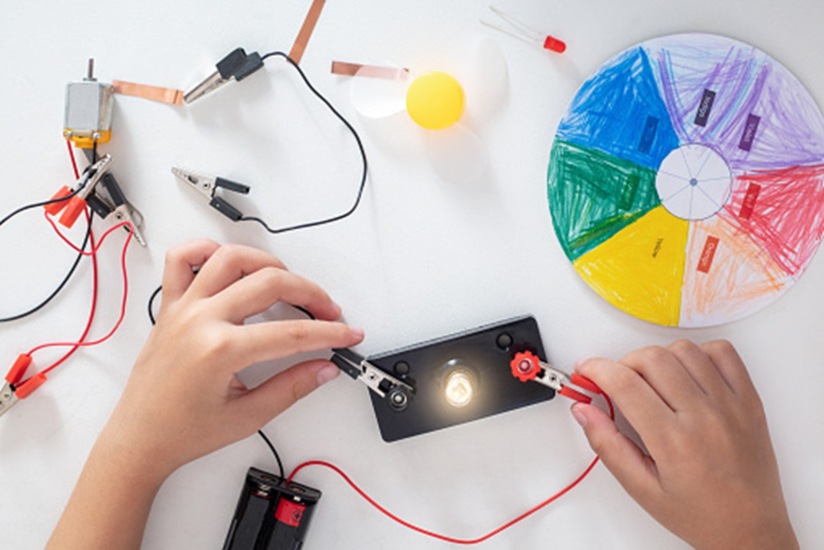Common Applications of Parallel Circuits
Electricity and electronics are fascinating fields that impact every aspect of our daily lives. One of the foundational concepts in this field is parallel circuits. If you’ve ever wondered how your home lighting works or how complex electronics maintain efficiency and functionality, then understanding parallel circuits is your first step. Students in Pickens Technical College’s electronic technician program get hands-on experience with this concept on their way to becoming skilled professionals. Explore our electronics programs in Aurora, CO.

What Are Parallel Circuits?
Put simply, a parallel circuit is a type of electrical circuit where the components (like resistors or lights) are connected across multiple paths. Unlike series circuits, where the current passes through each component one by one, in parallel circuits, the current splits and flows simultaneously through each branch.
Think about your home’s electrical system. Whether you turn a lamp on in your bedroom or switch on your kitchen lights, the rest of the house is unaffected. That’s because home circuits are wired in parallel. These circuits operate independently and provide constant voltage to all components. What’s more, parallel circuits tend to be energy efficient. By balancing loads, they optimize electricity flow.
The Importance of Technical Training in Electronics
Parallel circuits are among the first concepts students encounter when they enroll in our electronic technician certification program. Mastering them is fundamental to designing and troubleshooting electrical systems. Here are three key reasons why a knowledge of parallel circuits is essential to working with electronics:
Open Doors to Specific Careers
Fields like electrical engineering, renewable energy, and telecommunications rely on parallel circuit principles. If you want to work with solar panels, laptops, or modern appliances, you’ll need to know about parallel circuits. Data center professionals also benefit from an education in parallel circuits.
Develop Sustainable Energy Solutions
As global industries move toward sustainability, electronics professionals are finding ways to optimize energy use through advanced circuit design. For example, smart homes often use parallel circuits to introduce automated features while ensuring uninterrupted power flow. Electric vehicles also use parallel battery configurations to promote efficiency and store larger amounts of energy.
Problem-Solving and Innovation
Our electronic technician program trains students for technical careers, but it also offers training in soft skills. Problem-solving and innovation are particularly relevant here. Employers value professionals who not only understand theoretical concepts but can also troubleshoot, repair, and improve electrical circuits.
Why Choose an Education in Electronics?
Electronics and parallel circuits continue to play a growing role in shaping industries like healthcare, manufacturing, and education. Here’s why students—especially those drawn to STEM—should explore a career in electronics:
- High-Demand Skills—The skills taught in an electronics maintenance technician program are in high demand. The field is projected to grow to 15% and pay a median rate of $35 an hour.
- Future Readiness—The transition toward automation and AI means a greater need for professionals who understand the technologies driving these systems.
- Versatility—The skills acquired in electronics are versatile. Technicians may be able to work across various sectors, including manufacturing, telecommunications, and renewable energy.
- Problem-Solving Opportunities—This career allows for the use of critical thinking and troubleshooting skills to solve electronic malfunctions, making each day unique and engaging.
- Learning and Growth Potential—Technology evolves rapidly and offers continuous learning opportunities to stay ahead with new tools and advancements.
What to Expect From our Electronic Technician Program
Enrolling in a certified electronics technician program is the first step to your lucrative career in the industry. At Pickens Technical College, we strive to make enrollment as simple as possible and provide the most value to our students. Here’s what to expect from our program:
Timeline
Most students complete the certificate within two semesters, or one year. We offer classes in the morning and afternoon for maximum convenience.
Courses
The program consists of 12 standard courses and one internship. These are split across two semesters and allow students to dive deeper into topics like parallel circuits. Courses cover all of the following:
- Transistors
- Soldering
- Digital devices
- Robotics
- Microcontrollers
- Solid state devices
Hands-On Learning
Hands-on learning is what really makes our electronic technician program stand out. Instead of only learning about parallel circuits in theory, students will have the chance to work with them directly. About 50% of our program is spent in the classroom, while the other 50% consists of hands-on practical work.
Work Toward Becoming an Electronic Technician Today
Electronics and parallel circuits are everywhere. These simple yet revolutionary systems make it possible for us to enjoy smart houses and many of the technologies we take for granted. If a career in this field sounds interesting to you, request information from Pickens Technical College. We’re glad to welcome new students to our electronic technician programs, and our admissions team is ready to walk you through the enrollment process. Contact us today to get started.

